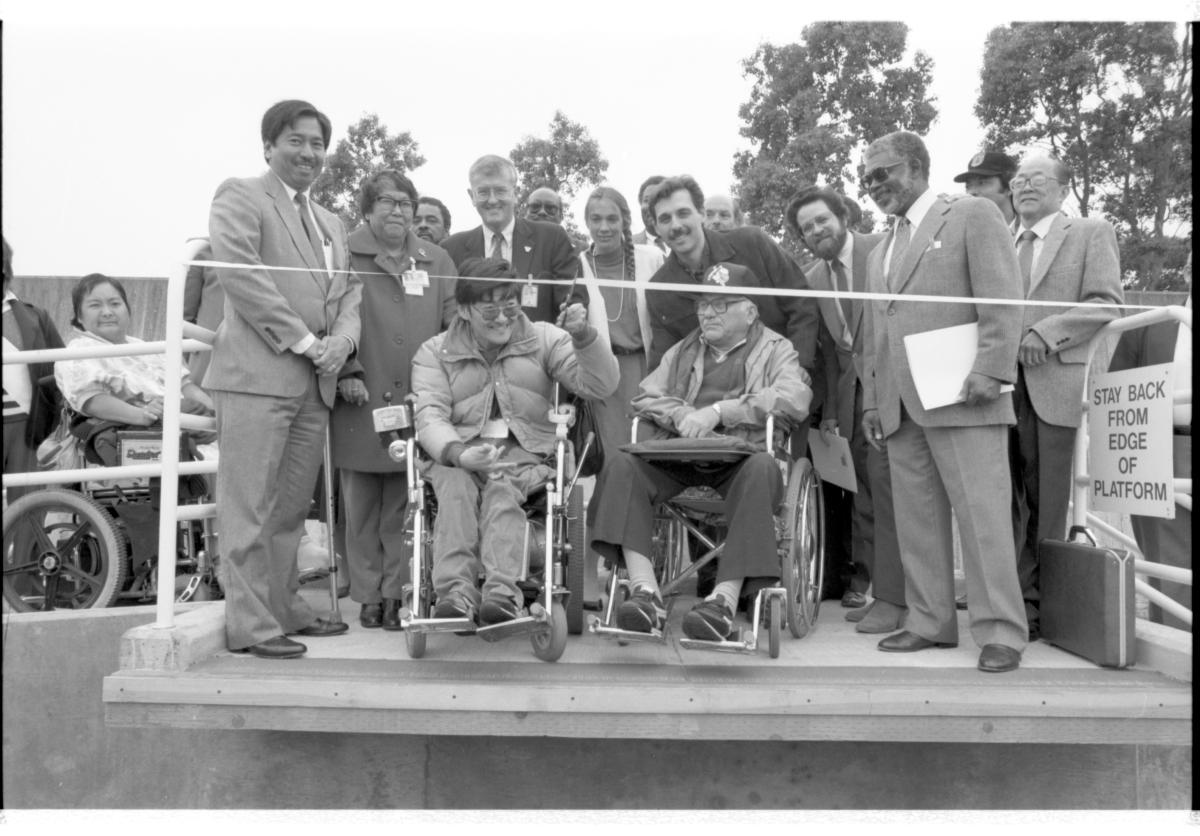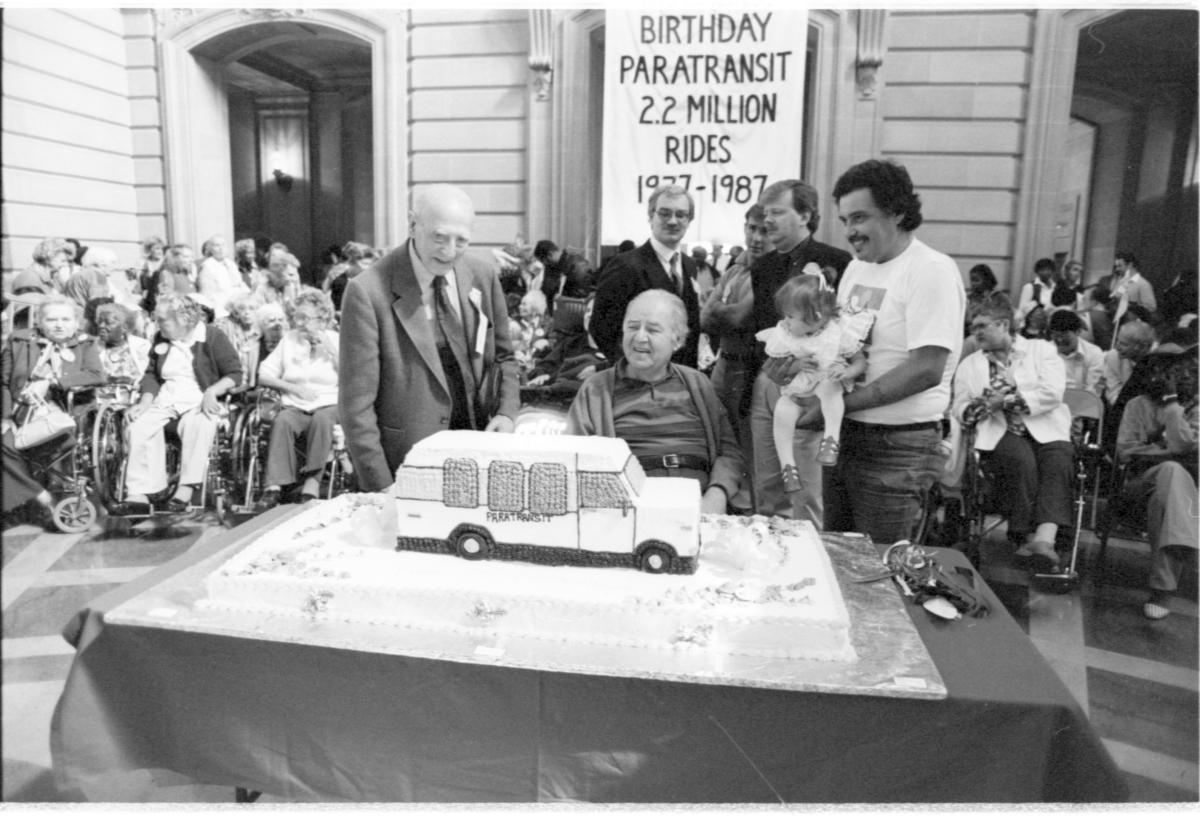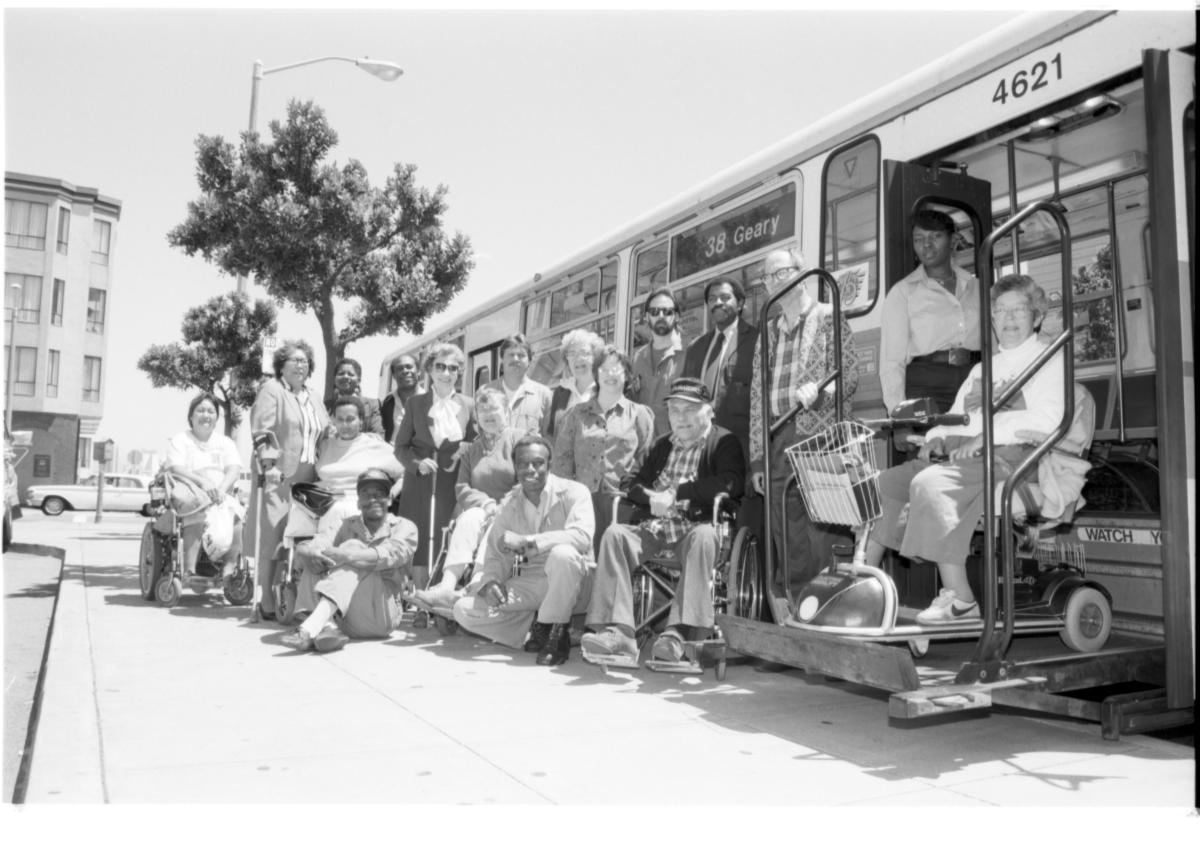
Accessible transportation in San Francisco keeps everyone rolling.
July marks the 35th anniversary of the landmark Americans with Disabilities Act (ADA). This civil rights law prohibits discrimination against people with disabilities.
The ADA made travel more accessible, opening doors for people with disabilities to navigate their communities on their own terms. Requiring accessible vehicles and paratransit services gave riders freedom to participate more fully in public life.
At the SFMTA, our work is rooted in making sure that transportation in San Francisco is accessible and affordable for all. Years before the ADA passed, our teams made decisions with accessibility in mind. As we celebrate the law’s 35th anniversary, we honor the rich history of disability activism in the Bay Area -- and the ways it influenced our early work.
San Francisco activism paved the way for the ADA
The modern disability rights movement has deep roots in the Bay Area. In 1977, more than 150 activists occupied the San Francisco Federal building for 26 days.
The occupation was a response to repeated delays in signing the regulations needed to enforce Section 504 of the Rehabilitation Act. Section 504 would ban disability-based discrimination in programs receiving federal funding, such as schools and hospitals. This was the longest occupation of a federal building in U.S. history.
The efforts of the protestors resulted in the implementation of Section 504. It was one of the first U.S. federal civil rights laws offering protection for people with disabilities. It paved the way for the Americans with Disabilities Act thirteen years later.

Dedication ceremony for a new K Ingleside platform with an accessible ramp. Disability rights activist Bruce Oka (left center) cuts the ribbon. June 8, 1989.
Muni’s commitment to accessibility pre-ADA
Many years before the ADA passed, our teams were hard at work prioritizing accessibility. In the late 1970s, we reduced fares for seniors and people with disabilities. In the 1980s, we began providing wheelchair-accessible lifts in Muni buses. This made Muni one of the first accessible transportation systems.
In 1977, community organization Cannon Kip established San Francisco’s first paratransit program. It helped riders who were unable to use the fixed route system. We were the primary funder for this program before taking over operations in the early 1980s.
During the AIDS Epidemic, SF Paratransit was critical in getting people to medical appointments. Because of the increase in demand in that time period, the paratransit program had a waiting list of more than 4,000 riders. Over the years, our paratransit program expanded and now provides more than half a million rides every year.

Oldest and youngest paratransit riders take part in a celebration for the 10-year anniversary of Paratransit. September 21, 1987.
From Muni to the SFMTA: Our work post-ADA
In the late 1990s and early 2000s, after the ADA was passed, the SF Municipal Railway (Muni) merged with the Department of Parking and Traffic. This formed the San Francisco Municipal Transportation Agency (SFMTA). In 2009 the Taxi Commission joined the SFMTA. This expanded the scope of Muni’s original accessibility office.
San Francisco has long recognized that accessibility goes beyond compliance with legislation. We have worked to exceed the standards set by the ADA and other state and local requirements.
Today, the Accessible Services team works with nearly every part of the agency. We make sure that fixed-route transit service, like buses and trains, is accessible. We also focus on providing high-quality paratransit.
Beyond this, we work to ensure that all elements of street design are accessible. This includes things like parking spots, bike lanes and transit islands. It also means that we work to minimize construction impacts as we make changes to city streets.
To make sure our designs serve everyone, we gather feedback from a wide range of community members. Our Accessible Services teams partners with two advisory committees: the Paratransit Coordinating Council (PCC) and the Multimodal Accessibility Advisory Committee (MAAC). These committees have provided a forum for public engagement on accessibility issues for over 43 years.
Last fall, we took a major step to advance our efforts around accessibility. We published our Accessibility Strategy Needs Assessment. The assessment summarizes years of accessibility work. It also highlights areas where we can continue to improve.
From there, we produced and promoted our Accessibility Needs Survey. It asked responders to rank which needs we should prioritize. We received over 1,300 responses and are now working to build an action plan of next steps.
You can read more about the survey results and the path ahead in this blog post.
For an even deeper dive into our decades of work, take a listen to "Bringing Everyone on Board." This episode of our Taken with Transportation podcast chronicles the progress we have made regarding accessibility. It also offers a first-hand account of the challenges people with disabilities can face when it comes to getting around.

Accessibility Advisory Committee members with Muni Staff. July 30, 1987.
Celebrate with us
Here at SFMTA, we’ll be honoring ADA35 in a few ways. On July 26th, we will be hosting a community celebration in Golden Gate Park. It will be held on the Music Concourse, 1 Bowl Drive from 12-4 p.m.
We'll be tabling alongside some amazing community partners and fellow city agencies. There will be helpful resources on accessible transportation in San Francisco, activities and fun giveaways. We hope you’ll join us!
The celebration continues online with our Faces of Muni campaign. Faces of Muni highlights community members with disabilities sharing their experiences navigating public transit. You can find this campaign on the SFMTA’s Instagram and Facebook pages. It is also published on the ADA35 project page. We invite you to share why accessible transportation matters to you with the hashtag #MuniMatters.
For more updates on our ADA35 programming, visit our ADA35 webpage.